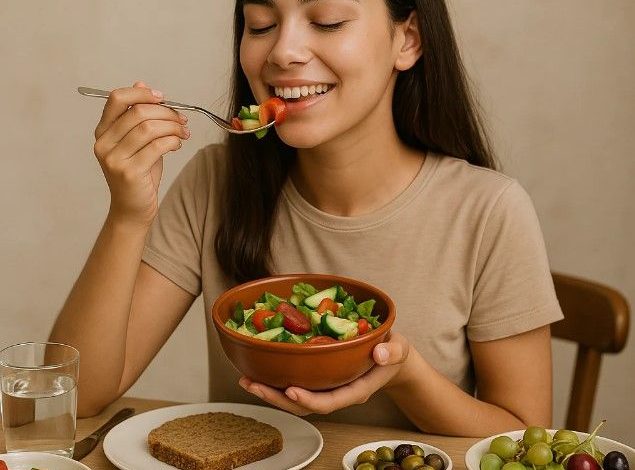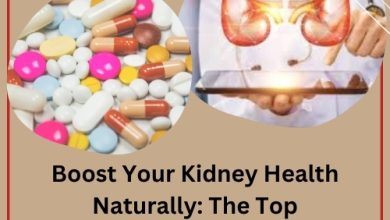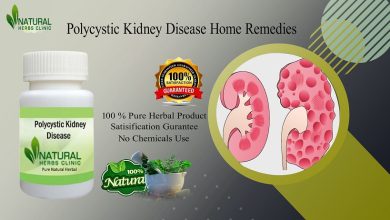The Ultimate Polycystic Kidney Disease Diet: What to Eat & What to Avoid

Polycystic Kidney Disease (PKD) is a chronic, inherited condition that causes fluid-filled cysts to develop in the kidneys, leading to an enlarged kidney size and impaired function over time. While there is no known cure for PKD, managing the disease through lifestyle changes particularly through a targeted Polycystic Kidney Disease Diet can help slow its progression, ease symptoms, and improve overall health and well-being.
What is Polycystic Kidney Disease?
Polycystic Kidney Disease (PKD) is a genetic disorder in which clusters of fluid-filled sacs (called cysts) develop primarily within the kidneys. These cysts cause the kidneys to enlarge and lose function over time.

Key Facts About PKD:
- Types of PKD:
- Autosomal Dominant PKD (ADPKD) – The most common form. Symptoms usually appear between the ages of 30 and 40.
- Autosomal Recessive PKD (ARPKD) – A rarer form that can cause serious problems at birth or in early childhood.
- Symptoms may include:
- High blood pressure
- Back or side pain
- Blood in urine
- Frequent kidney infections
- Kidney stones
- Enlarged abdomen due to enlarged kidneys
- Causes:
- Genetic mutations passed from one or both parents, depending on the type of PKD.
- Complications:
- Kidney failure (often by age 60 in ADPKD)
- Liver cysts
- Heart valve problems
- Aneurysms in the brain
- Diverticulosis in the colon
- Diagnosis:
- Imaging tests like ultrasound, CT scan, or MRI
- Genetic testing
- Treatment:
- There is no cure, but Treatments Polycystic Kidney Disease can manage symptoms and slow progression:
- Controlling blood pressure
- Pain management
- Treating infections
- Dialysis or kidney transplant if kidney failure occurs
- There is no cure, but Treatments Polycystic Kidney Disease can manage symptoms and slow progression:
Related Article: Boost Your Kidney Health Naturally: The Top Supplements You Need
Why Diet Matters in Polycystic Kidney Disease
Polycystic Kidney Disease (PKD) is a genetic disorder characterized by the growth of numerous cysts in the kidneys. These cysts can lead to various complications, including high blood pressure, kidney infections, chronic pain, and eventually kidney failure. Although PKD is primarily driven by genetic mutations, lifestyle and dietary habits play a significant role in managing its progression and symptoms. Diet, in particular, is a powerful tool that can help slow the decline of kidney function, reduce complications, and improve quality of life for people living with this condition.
The Role of Diet in PKD
1. Controlling Blood Pressure
High blood pressure is both a cause and consequence of declining kidney function in PKD. Managing it is crucial, as uncontrolled hypertension accelerates cyst growth and kidney damage. A well-balanced, low-sodium diet (polycystic kidney disease diet) helps control blood pressure effectively. The American Heart Association recommends consuming no more than 2,300 mg of sodium per day, and ideally aiming for 1,500 mg. Reducing intake of processed foods, canned soups, salty snacks, and fast food can significantly help keep blood pressure within a healthy range.
2. Reducing Cyst Growth and Kidney Workload
Recent studies have explored how certain dietary strategies may directly influence cyst growth. For example, research in animal models suggests that a low-protein or ketogenic diet may slow the growth of kidney cysts. While human studies are still limited, some experts recommend moderate protein intake—enough to meet bodily needs without excess. A diet too high in protein can increase the kidneys’ workload, which may be harmful over time.
Reducing simple sugars and refined carbohydrates is also advisable. High sugar levels may contribute to insulin resistance, a condition linked to faster PKD progression. Replacing sugary snacks with whole grains, fruits, and vegetables helps maintain stable blood glucose levels and reduces inflammation.
3. Maintaining Healthy Body Weight
Obesity is a known risk factor that worsens kidney function in people with PKD. Excess body fat increases the likelihood of developing hypertension, diabetes, and cardiovascular disease—all of which strain the kidneys further. A healthy, nutrient-rich diet aids in maintaining a healthy weight, especially when combined with regular physical activity. Prioritizing whole foods such as lean proteins, whole grains, fruits, vegetables, and healthy fats ensures the body gets essential nutrients without excessive calories.
4. Preventing Kidney Stones and Urinary Tract Infections
Individuals with PKD are at increased risk of developing kidney stones and urinary tract infections (UTIs). Hydration is a key dietary factor in preventing these complications. Drinking plenty of water helps flush out toxins and reduce the concentration of substances that form kidney stones. While the ideal amount of water varies, a common recommendation is 8–10 glasses per day, or more if advised by a healthcare provider.
Some polycystic kidney disease dietary modifications, like limiting foods high in oxalates (such as spinach, rhubarb, and nuts) or uric acid (like red meat and shellfish), may also reduce stone formation. In cases of frequent UTIs, reducing sugar intake and including foods that support urinary health, like cranberries (without added sugar), can be beneficial.
5. Supporting Heart Health
Heart disease is a leading cause of death in people with PKD, especially those with declining kidney function. A heart-healthy diet—rich in omega-3 fatty acids, fiber, and antioxidants—helps reduce cardiovascular risks. This includes regular consumption of fatty fish (like salmon), flaxseeds, walnuts, olive oil, berries, leafy greens, and whole grains.
Avoiding trans fats, saturated fats, and excessive cholesterol from processed foods and red meat is equally important. These dietary changes support both heart and kidney health and help reduce systemic inflammation.
6. Managing Electrolyte Balance
As PKD progresses, the kidneys may struggle to maintain a proper balance of electrolytes such as potassium, phosphorus, and calcium. This imbalance can cause muscle weakness, bone disease, and other complications. For patients with declining kidney function, restricting high-phosphorus foods (like dairy, cola beverages, and processed meats) and monitoring potassium intake (from foods like bananas, potatoes, and oranges) may be necessary. A registered dietitian can provide personalized guidance based on individual lab results.
With this in mind, let’s break down the key components of an effective Polycystic Kidney Disease Diet.
Related Article: Polycystic Kidney Disease and Pregnancy: What Every Woman Needs to Know
What to Eat on a Polycystic Kidney Disease Diet
1. Low-Sodium Foods
Controlling sodium intake is essential for managing blood pressure and reducing fluid retention. High salt levels can exacerbate PKD complications.
Foods to Eat:
- Fresh fruits and vegetables
- Low-sodium canned beans or rinse regular ones
- Whole grains (like brown rice, quinoa, oats)
- Fresh poultry, fish, and lean meats (unprocessed)
- Herbs and spices instead of salt
Tips:
- Aim for less than 2,300 mg of sodium per day or lower, as advised by your doctor.
- Read labels carefully for “hidden” sodium in processed foods.
2. Plant-Based Proteins
Protein is vital, but excessive intake can strain the kidneys. Plant-based sources are generally easier on the kidneys and beneficial for cardiovascular health.
Good Choices Include:
- Lentils, chickpeas, black beans
- Tofu and tempeh
- Nuts and seeds (in moderation)
- Plant-based meat alternatives (low in sodium)
Note: Some patients may still consume small portions of lean animal protein, but consult your nephrologist for personalized advice.
3. Fruits and Vegetables (Low-Potassium)
Fruits and vegetables are rich in antioxidants and anti-inflammatory compounds that support kidney health.
Recommended Low-Potassium Options:
- Apples, berries, grapes, pineapple, and watermelon
- Cauliflower, cabbage, cucumbers, green beans, lettuce
Watch Your Potassium: High potassium can be dangerous if kidney function declines, so limit or avoid bananas, oranges, potatoes, and tomatoes unless approved by a healthcare provider.
4. Healthy Fats
Incorporate heart-healthy fats that reduce inflammation and support cardiovascular health, which is often impacted by PKD.
Examples Include:
- Olive oil
- Avocados (in moderation due to potassium content)
- Nuts like almonds and walnuts
- Fatty fish like salmon or mackerel (rich in omega-3s)
5. Adequate Fluids
Staying hydrated is essential to help kidneys flush out toxins. However, in later stages of PKD or if you develop CKD, fluid intake may need to be restricted.
General Guidelines:
- Drink water throughout the day
- Avoid sugary beverages and soda
- Consult your doctor regarding fluid intake goals
6. Calcium and Phosphorus Control
These minerals can build up in the blood as kidney function declines. Too much phosphorus can weaken bones and cause heart issues.
Choose:
- Low-phosphorus foods like rice milk (non-enriched), fresh vegetables
- Avoid processed foods with phosphate additives
7. Antioxidant-Rich Foods
Oxidative stress is linked to cyst growth in PKD. A diet rich in antioxidants may slow disease progression.
Top Antioxidant Foods:
- Berries (blueberries, strawberries)
- Leafy greens (kale, spinach if potassium allows)
- Red bell peppers
- Garlic and onions
Related Article: Best Yogurt For Kidney Disease Making The Right Recovery Choice
What to Avoid on a Polycystic Kidney Disease Diet
1. High-Sodium Foods
Processed and packaged foods are the largest sources of sodium in most diets.
Avoid:
- Canned soups and vegetables (unless labeled low-sodium)
- Processed meats like bacon, sausage, deli meats
- Fast food and restaurant meals
- Salted snacks like chips and pretzels
2. High-Protein Diets
Too much protein increases the workload on kidneys and may accelerate damage.
Avoid Excessive:
- Red meat (especially processed like hot dogs, ham)
- Full-fat dairy products (milk, cheese, yogurt)
- Protein powders and bars (unless approved)
3. Foods High in Phosphorus
Phosphorus overload is a risk for people with PKD, especially in advanced stages.
Avoid:
- Processed foods with phosphate additives
- Colas and dark sodas
- Organ meats
- Dairy products (opt for limited servings or alternatives)
4. High-Potassium Foods (if advised by your doctor)
If blood potassium levels rise, you may need to restrict certain fruits and vegetables.
Avoid or Limit:
- Bananas, oranges, cantaloupe
- Potatoes, sweet potatoes, spinach
- Tomatoes and tomato-based sauces
5. Caffeine and Alcohol
Caffeine can increase blood pressure, and alcohol can interfere with kidney function and medication.
Limit or Avoid:
- Coffee and energy drinks
- Alcoholic beverages (especially in large amounts)
- Sugary or caffeinated sodas
6. Sugar and Refined Carbohydrates
PKD increases the risk of diabetes. Controlling blood sugar is essential.
Avoid:
- Sugary snacks (cookies, cakes, pastries)
- White bread, pasta, and rice
- Sweetened beverages like soda and fruit juices
Related Article: Exclusive: American Kidney Fund, Ubie Partner For AI Kidney Disease Detector
Sample One-Day Polycystic Kidney Disease Diet Plan
Here’s a sample meal plan to help guide your day:
Breakfast:
- Oatmeal with blueberries and a splash of rice milk
- Herbal tea or water
Snack:
- Apple slices with unsalted almond butter
Lunch:
- Quinoa salad with cucumbers, bell peppers, chickpeas, olive oil dressing
- Mixed greens salad
Snack:
- Unsalted rice cakes with hummus
Dinner:
- Grilled salmon or tofu
- Steamed green beans and cauliflower
- Brown rice or barley
Evening:
- Small bowl of fresh pineapple or grapes
Lifestyle Tips to Support Your Polycystic Kidney Disease Diet
- Work with a Renal Dietitian: Tailor your diet to your specific stage of PKD and lab results.
- Monitor Blood Pressure: A healthy diet plus medication, if needed, can keep blood pressure in check.
- Exercise Regularly: Movement helps control weight and blood pressure, reducing kidney strain.
- Avoid Smoking: Smoking accelerates kidney damage and worsens cardiovascular health.
- Read Labels: Hidden sodium, phosphorus, and potassium can lurk in packaged foods.
- Prepare Meals at Home: Cooking gives you control over ingredients and portion sizes.
Related Article: Living With Adult Polycystic Kidney Disease: Survival Tips And Tricks
Frequently Asked Questions (FAQs)
Q1: Is a vegetarian or vegan diet good for PKD?
A: Yes, plant-based diets can be kidney-friendly and reduce the risk of heart disease, which is a common complication of PKD. However, ensure you’re getting enough protein and watch potassium levels.
Q2: Can supplements help with PKD?
A: Some studies suggest certain supplements like omega-3 fatty acids, vitamin D, or antioxidants may be helpful, but always consult your doctor first.
Q3: Should I avoid dairy completely?
A: Not necessarily. Some low-phosphorus, low-potassium dairy alternatives (like rice milk) may be safer. Check with your doctor or dietitian.
Q4: How much water should I drink?
A: This depends on your kidney function. In early stages, drinking adequate water may help; in later stages, intake may need to be limited.
Final Thoughts
Living with PKD doesn’t mean giving up flavorful or satisfying meals it means making informed choices to protect your kidneys and enhance your quality of life. A carefully planned Polycystic Kidney Disease Diet focuses on fresh, whole foods that support kidney health while minimizing strain.
Each patient is different, so it’s essential to work closely with a healthcare provider and dietitian to build a personalized plan. With the right diet, lifestyle changes, and medical support, it is entirely possible to manage PKD effectively and lead a full, vibrant life.
Related Article: Polycystic Kidney Disease Natural Treatment At Home




